Manduca diffissa diffissa
(Butler, 1871)
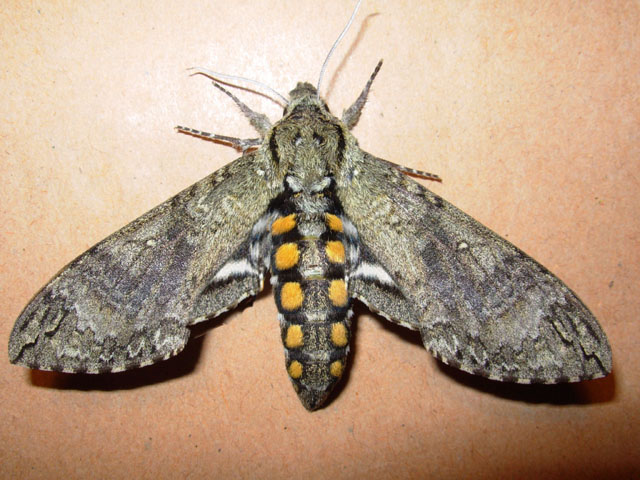
Manduca diffissa diffissa, October 31, 2007, Buenos Aires, Argentina,
Ezequiel Osvaldo Núñez Bustos,
id by Ian Kitching.
This site has been created by
Bill Oehlke at oehlkew@islandtelecom.com
Comments, suggestions and/or additional information are welcomed by Bill.
TAXONOMY:
Family: Sphingidae, Latreille, 1802
Subfamily: Sphinginae, Latreille, [1802]
Tribe: Sphingini, Latreille, 1802
Genus: Manduca Hubner, 1807 ...........
Species: diffissa diffissa Butler, 1871
|
MIDI MUSIC
.....It's a Wonderful World.....
copyright C. Odenkirk
ON.OFF
<bgsound src="world.mid" LOOP=FOREVER>
|
DISTRIBUTION:
Manduca diffissa diffissa
flies in
Argentina (specimen type locality):
Buenos Aires, and possibly as far north as Iguazu Falls, Misiones; and
Uruguay.
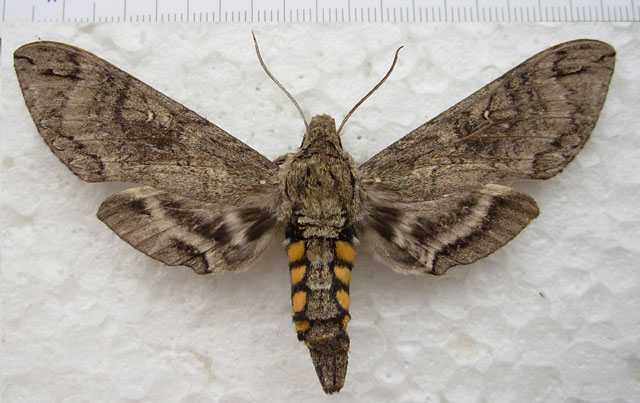
Manduca diffissa diffissa, Buenos Aires, Argentina, 920mm
courtesy of Ezequiel Osvaldo Núñez Bustos,
id by Ian Kitching.
Ian Kitching writes, "At present (October 2007), the subspecies
situation in Manduca diffissa is rather confused.
"Manduca diffissa diffissa is a small grey subspecies from
SE Argentina and Uruguay. It might be a separate/distinct species?
Rothschild & Jordan listed M. d. diffissa from Paraguay but I
suspect these would be better placed as M. d. petuniae
(though I have not checked closely).
"Manduca diffissa petuniae is generally (but not always) a pale
brown form from SE Brazil as far north as Minas Gerais (and probably
in the Iguazu, Argentina area).
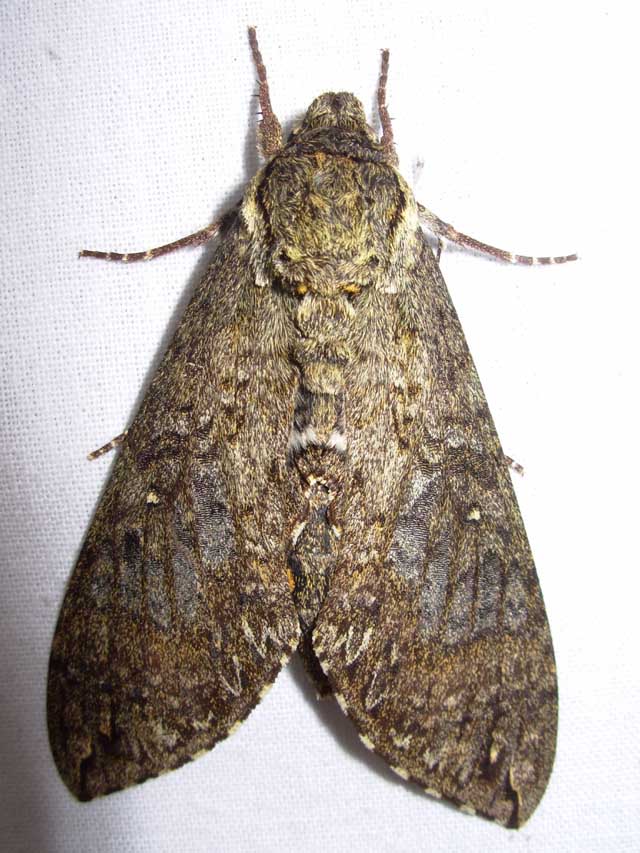
Manduca diffissa diffissa or petuniae, Iguazu, Misiones, Argentina,
sent as possible Manduca hannibal hamilcar, courtesy of Ezequiel Osvaldo Nunez Bustos,
"more likely Manduca diffissa diffissa or petuniae, representing a northerly range extension", Bill Oehlke
"Manduca diffissa tropicalis is a larger, darker form from Minas
Gerais to Colombia. However, to quote R&J: 'The ground colour of the
forewing is, however, variable, some individuals being decidedly more
russet than others, though not so pale as petuniae'."
"Manduca diffissa mesosa is a form from Salta and Tucuman in
northern Argentina (and probably southern Bolivia) that is
intermediate between tropicalis and petuniae(!).
"Manduca diffissa zischkai is a high altitude subspecies from
Bolivia that may be a separate species.
"Manduca diffissa ssp in eastern Ecuador is decidedly greenish,
and the distinction between this and Manduca mossi is
difficult to determine and is under study by Jean Haxaire (it was
being studied by Jean-Marie Cadiou and me until his untimely
passing).
"I doubt that the distinction between mesosa, petuniae and
tropicalis will hold, but maybe DNA barcoding will suggest how
things should be organized."
CATE: "A small pale southern form.
Forewing upperside with postdiscal line strongly marked, but the white, submarginal zigzag line is not prominent, generally barely indicated;
apart from the postdiscal, all lines sometimes obsolescent."
Due to weak am line, and quite pale area along inner margin, I (Bill Oehlke) feel the above specimen is more likely Manduca diffissa diffissa.
FLIGHT TIMES:
Manduca diffissa diffissa adults
fly in March (EB) and possibly in other months.
ECLOSION:
Pupae probably wiggle to surface from
subterranean chambers just prior to eclosion.
SCENTING AND MATING:
Females call in the males with a
pheromone released from a gland at the tip of the
abdomen. Adults take nectar from flowers.
EGGS, LARVAE, PUPAE:
Larvae have been reported on
Brugmansia arborea, Cestrum nocturnum, Cestrum parquii (EB),
Lycopersicon esculentum, Nicotiana alata, Nicotiana glauca, Nicotiana
tabacum, Solanum paniculatum and Solanum tuberosum.

Manduca diffissa diffissa larva, Buenos Aires, Argentina,
courtesy of Ezequiel Osvaldo Núñez Bustos,
Martín García Island, on the Río de la Plata and near Uruguay,
id by Ian Kitching.
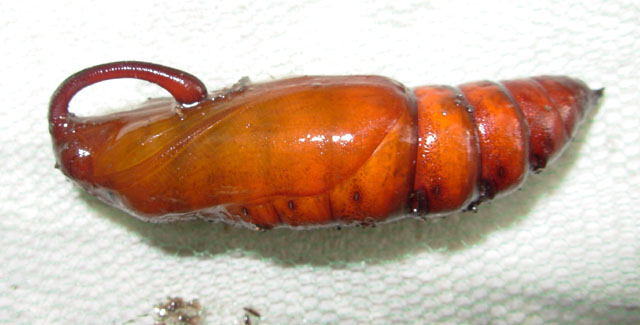
Manduca diffissa diffissa pupa, Argentina, courtesy of
Ezequiel Osvaldo Núñez Bustos.
Ezequiel reports this species feeds on Green Cestrum
(Cestrum parquii) of the Solanaceae family.
Return to Sphingidae Index
Return to Sphingini Tribe
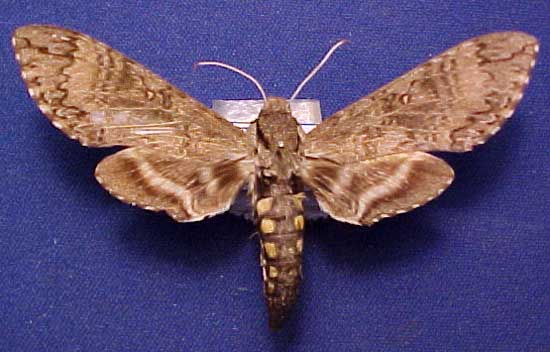
Manduca
diffissa diffissa by John Vriesi.





